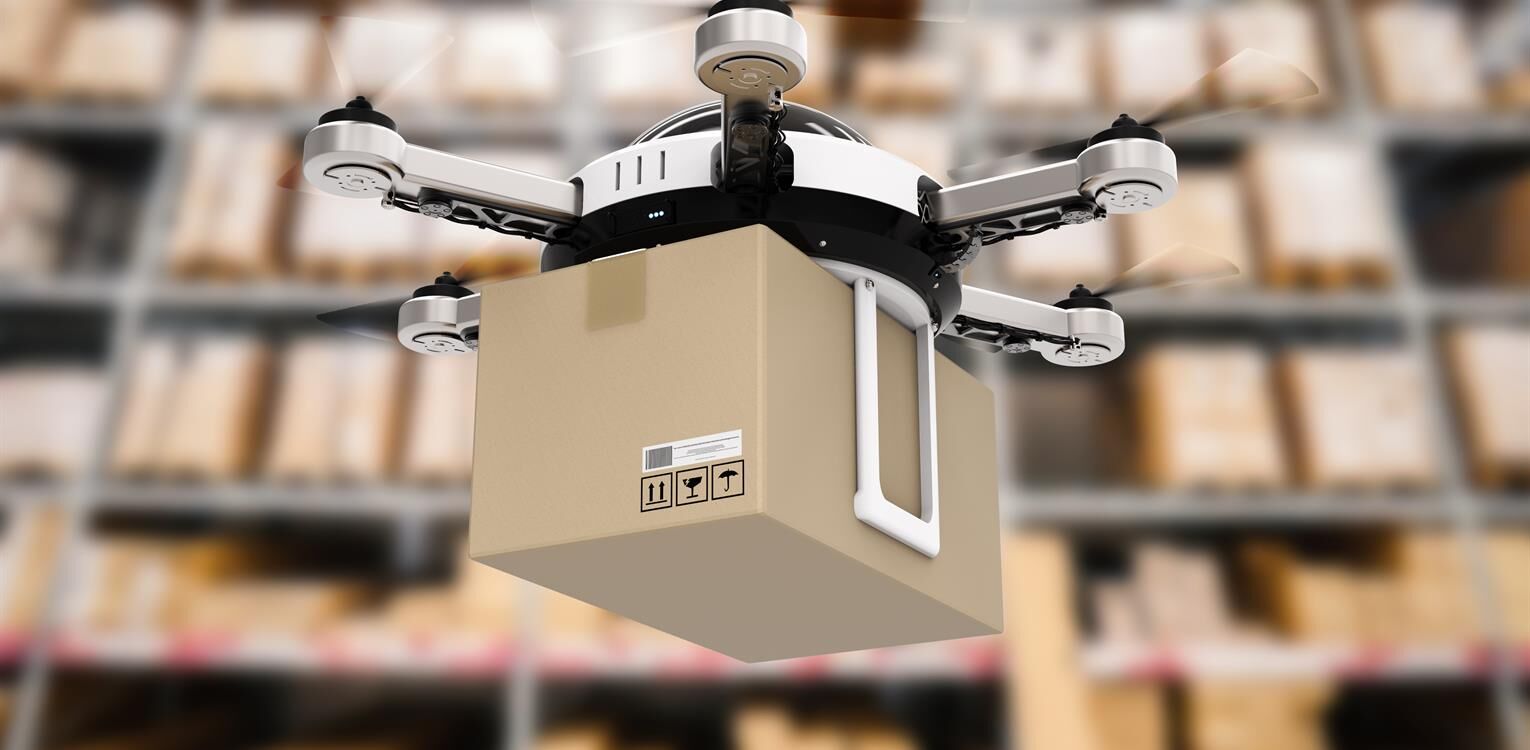New Resilience – How to Make Production and Logistics Future-Proof

4 min read
Production planning and logistics suffer from a volatile demand and supply situation. Unpredictable slumps in demand and supply, a shrinking global economy – the current pandemic has hit many companies painfully. Medium-sized companies and large corporations alike are facing new challenges, confronted with uncertainty and pressure to adapt.
With our immediate IT packages, we’ve been able to help hundreds of companies on short notice, whether it’s remote work or fast cloud solutions like SAP Ariba, which helps buyers gain better access to suppliers.
In production and logistics, it is now a matter of concluding this phase of reacting, improvising and hedging and starting the new phase of building and reshaping – with the perspective of the coming months. The goal should be to make your company resilient and fit for the future so that it can successfully withstand upcoming unforeseen events and continue to grow.
You’ve probably already adapted the lessons learned from the past year in business: You’ve developed new routines for your day-to-day business and established agile/flexible ways of working. But the pandemic has also shined the spotlight on gaps and problems that have existed for some time.
5 Critical Tasks for Production and Logistics
In our view, the production and logistics departments have five key challenges in the coming months:
- The S&OP (Sales and Operations Planning) process must be designed so that production planning/execution and logistics run hand-in-hand – even in a highly volatile demand and supply situation.
- Process and production changes should be able to be implemented quickly so that the company can react flexibly to new market situations.
- Replenishment planning and supplier management are under review. If parts of the supply chain fail at short notice, a quick replacement is needed.
- Cost efficiency is an ongoing strategic issue as well as the pressure to deliver meaningful reporting and analysis. Management needs complex simulations and forecasting to make informed and timely decisions about production and logistics.
- Process automation should be driven forward to realize further efficiency gains.
Out of the Crisis Mode, into the Future! Six Concrete Tips for Production and Logistics
1. How to Implement Digital Sales and Operations Planning
The sudden (partly negative, partly positive) changes in demand are causing many companies to realign their planning processes. The Sales and Operations Planning process is of central importance in this context, as it combines the sales market, procurement and financial views. In addition, it makes the mutual influences visible and thus manageable. With it.sales and operations planning for consumer R2R, production managers, logisticians and buyers receive a quickly implementable solution for the integrated planning of sales, production and procurement (applicable for SAP ERP and SAP S/4HANA).
The solution is based on SAP Integrated Business Planning (SAP IBP) and covers the full process from sales planning to production planning – with a special focus on the consumer goods industry. In Sales Planning, you can plan action quantities or automate planning using forecasting methods. However, in Sales and Operations Planning, it is not only the valid estimation of sales planning that is crucial, but also the procurement and production side.
Capacity demand peaks in production must be identified in good time, as must changes in demand on the raw materials procurement side, sometimes even with reference to specific suppliers. There are analysis functions and dashboards for these tasks. For example, in production you can visualize capacity requirements or, for each supplier, evaluate raw materials or components quantities to be delivered in the future. Would you like to learn more about Sales and Operations Planning? Contact us.
2. How to Plan Your Logistics Chains with Modern Tools

The right material in the right quantity with the right quality at the right time and at optimal costs at the right place: That is the goal of every logistics. SAP supports companies with the warehouse management/warehouse control system SAP Extended Warehouse Management (SAP EWM), which maps all intralogistics processes. As part of SAP Supply Chain Management (SAP SCM or SAP S/4), you can use SAP EWM to organize and optimize your processes within the entire logistics chain. Advantages include end-to-end process support from goods receipt to shipping, maximum transparency of inventories and movements, resource management that can be planned flexibly, minimized susceptibility to errors and disruptions, paperless, mobile order processing, and increased adherence to deadlines.
In supply chain management, the focus has also been on the topic of ”resilience in logistics processing” for some months now. Resilient process chains should be stable and resistant to external influences. Our experience: If each link in a chain is optimized, the entire chain is also optimized, stabilized and more resilient. Optimization is therefore the key to resilient logistics chains and is also highly important across companies. Do you have questions about optimizing your warehouse logistics and supply chains? Contact us.
3. How to Establish Digital Supplier Management
The purchasing process is complex – from sourcing to invoice settlement. And at the same time, it’s important to manage spend, identify new savings opportunities, and build a robust supply chain. The good news is that companies can make their procurement, order fulfillment, and financial supply chain management processes less complicated and more secure. Digital tools from the SAP Ariba solution portfolio facilitate all the steps buyers and suppliers need throughout the procurement process. SAP Ariba supports all systems and all goods and services. This enables you to join the world’s largest network for buyers and suppliers and collaborate with appropriate business partners. You gain the visibility you need to build and maintain sustainable, trusting business relationships. At the same time, you ensure that your policies and preferences automatically lead to efficient and error-free transactions.
4. How to Work Systematically with Key Figures and Digital Analytics Solutions
Many companies can access meaningful KPIs and key performance indicators. But only a few succeed in consistently using the performance indicators to manage the company and the individual departments in a planned manner. KPIs and key performance indicators can contribute to lasting success if they are incorporated into a systematic and process-oriented management model that integrates all areas of the company. In this process, management sets the strategic direction for finance in order to control the overall economic development of the company. Modern IT solutions are indispensable for this, as they can be used to collect, evaluate and visualize the necessary data. Mountains of figures are only useful if they can be (partially) automated and condensed into meaningful reports. How do KPI- and key performance indicator-supported management models help you to remain successful and to achieve your company’s goals? We would be happy to advise you on this. Contact us.
5. How to Accelerate Your Transition to SAP S/4HANA
A new ERP system can take your production to the next level: Streamline your supply chains with real-time purchase requisitions and live material requirements planning. Forecast delivery delays and minimize negative impacts with intelligent countermeasures. Support for older SAP ERP systems may not end for another seven years. But you can already benefit from a modern ERP today. Your company improves its business processes with the help of systematic automation – supported by artificial intelligence and robotic process automation. Faster and better decisions become possible with the help of integrated analytics solutions, voice interfaces and digital assistants. Your IT can meet industry-specific requirements with best practices for 26 industries and unlock new business models for an ever-evolving market. It’s important to plan and prepare for the change early, because implementation partner capacity could become tight as the end of support for legacy systems approaches. More information about the transition to SAP S/4HANA.
6. How to Benefit from an Efficient IT Strategy Consulting
How closely is your IT strategy linked to your business strategy? Is there even a formulated IT strategy? It pays off! As soon as management and IT are pulling in the same direction, you have budget security and can also turn the ”big wheels” in addition to the day-to-day business. Valuable ideas and useful technologies are usually available. But many companies waste valuable IT resources on ad hoc measures, isolated solutions and short-sighted approaches. Instead, develop an IT roadmap that is closely linked to the business strategy and can be implemented step by step.
If you have any questions on this topic or beyond, please do not hesitate to contact us. Because as an IT service provider, the core of our mission is built on our trust model: We Transform. SAP Solutions into Value. This mission applies to us more than ever in the current climate. Let’s take a look together at where we can support you in your challenges now, in the medium term and in the long term.